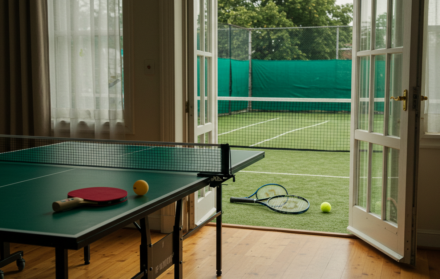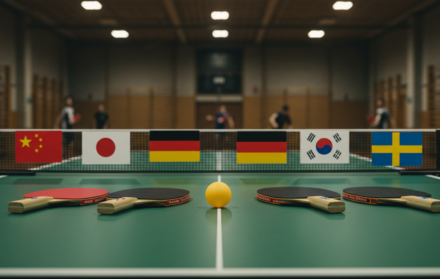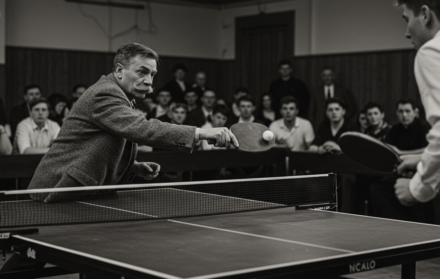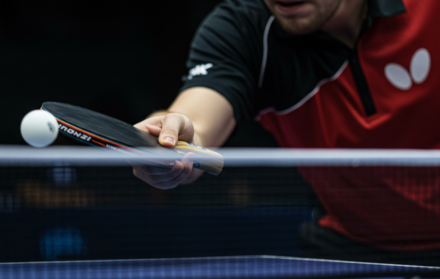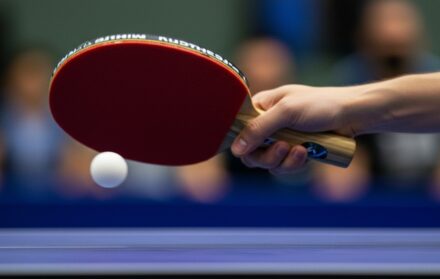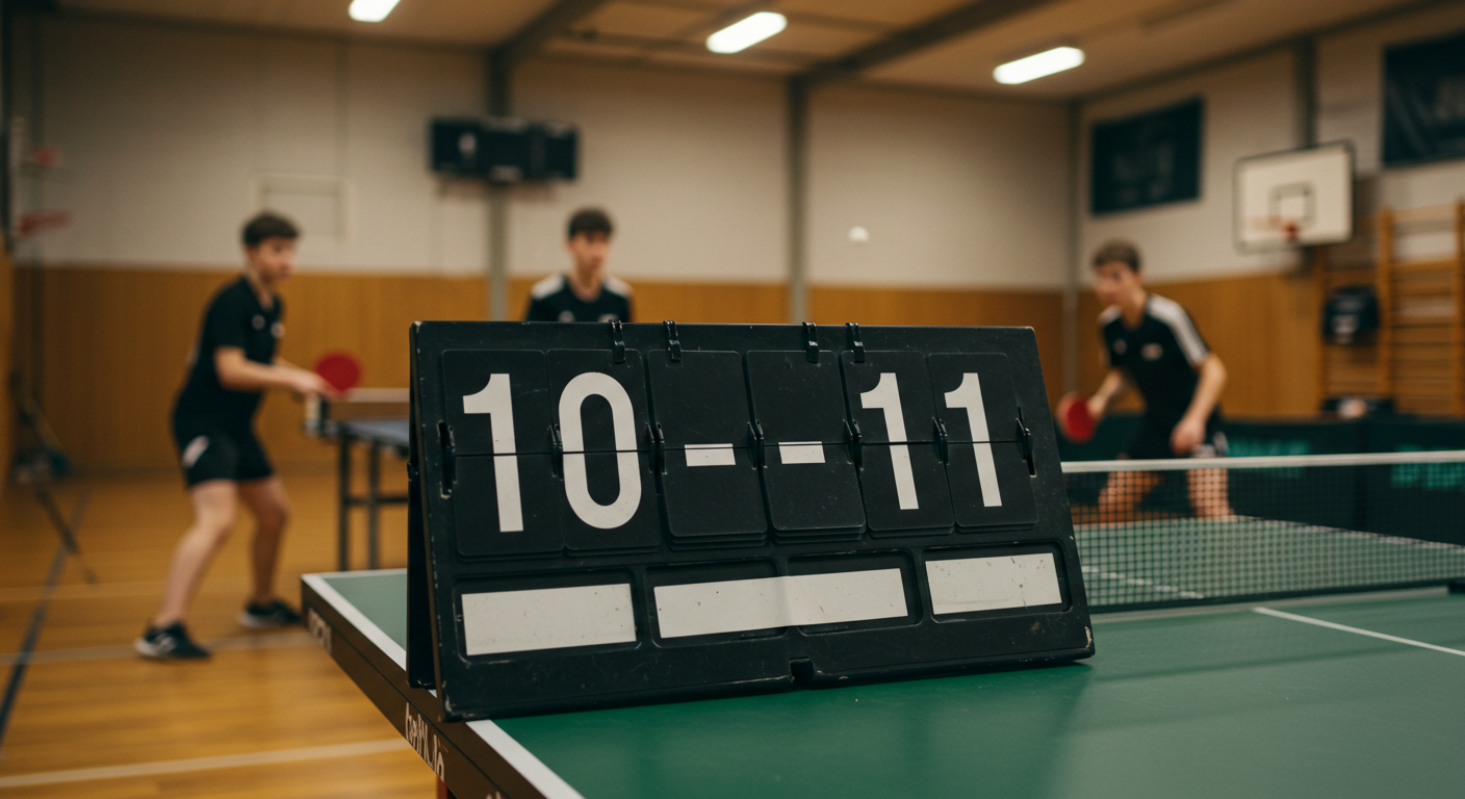
How does table tennis scoring work?
Scoring in table tennis might seem straightforward at first glance: players hit the ball back and forth until someone misses, and a point is awarded. But when you dive into the official scoring system, especially in competitive settings, you will find layers of structure, rules, and strategic implications that make it far more nuanced.
Whether you are a beginner learning the basics or an experienced player preparing for tournaments, understanding how scoring works in table tennis is essential. This guide explains how table tennis scoring works, how points are awarded, how games and matches are structured, and how the rules apply in singles and doubles.
The Basics of Table Tennis Scoring
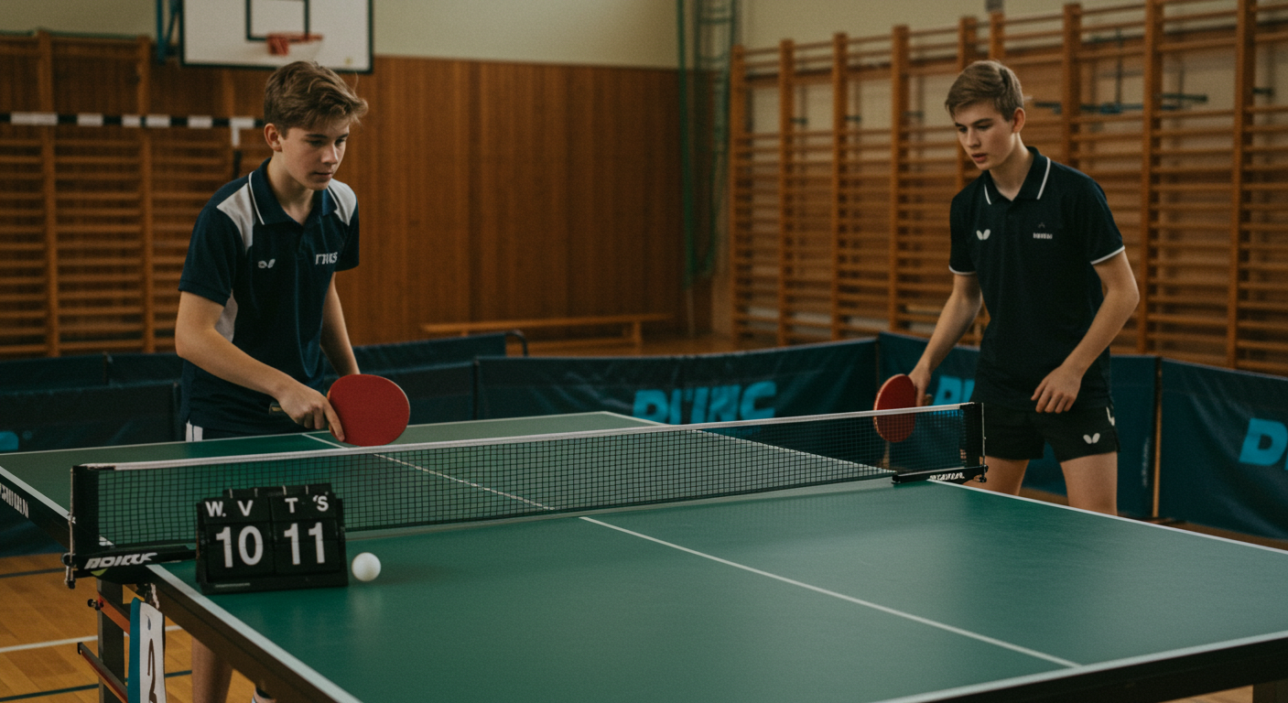
Table tennis is scored by awarding one point per rally. A rally begins with a legal serve and ends when one player fails to make a correct return.
The standard format is:
-
Games played to 11 points
-
Players must win by at least 2 points
-
Matches are typically best of 5 or 7 games
A point is scored on every rally, regardless of who served. This is known as rally scoring, and it replaced the older system where only the server could score.
When Was the Current Scoring System Introduced?
Up until 2001, table tennis games were played to 21 points, and service changed every 5 points. This longer format led to drawn-out matches and less viewer engagement, especially on television.
To make the sport more exciting and fast-paced, the International Table Tennis Federation (ITTF) changed the scoring system:
-
Games were shortened to 11 points
-
Service alternates every 2 points
-
Matches are faster, more intense, and easier to follow
This change modernized the game and made it more spectator-friendly, especially at the international level.
When Is a Point Awarded?
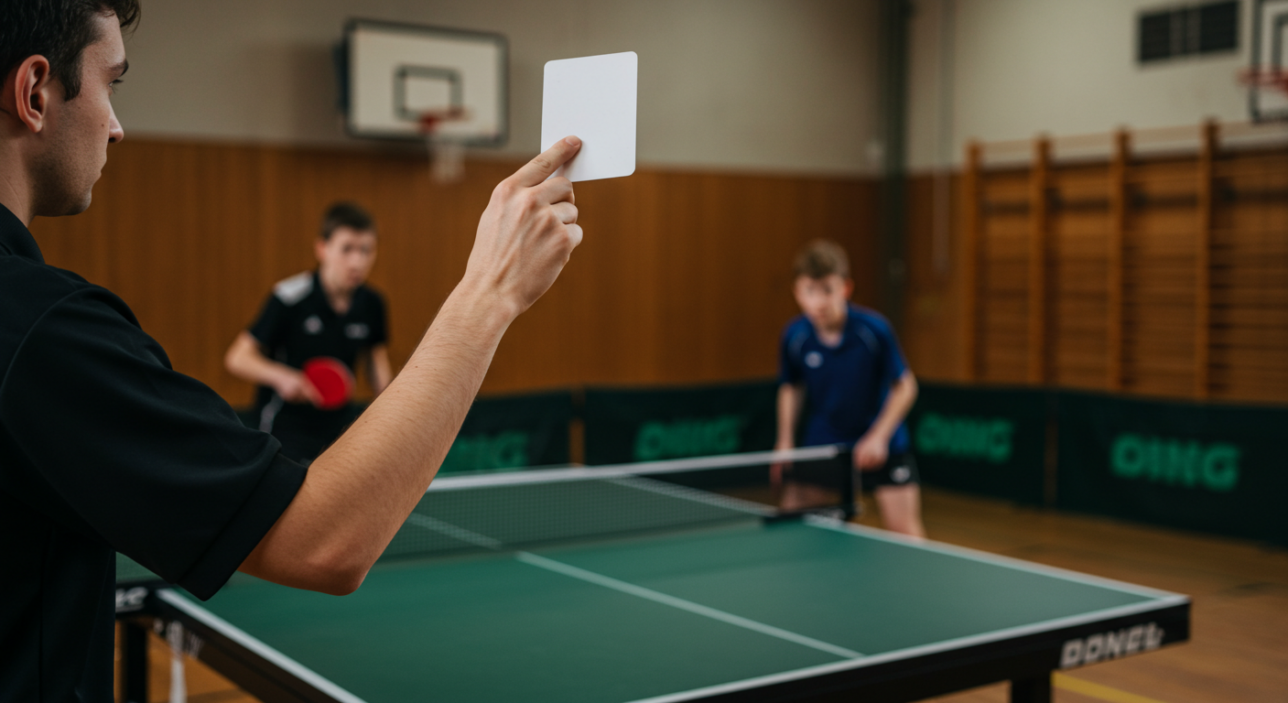
In every rally, one point is awarded. Here are the most common ways points are scored:
-
The opponent fails to return the ball
-
The serve is illegal
-
The return goes off the table without touching it
-
The ball bounces twice on one side
-
The ball is volleyed (hit before bouncing)
-
A player touches the net or table with their hand
-
The ball is struck more than once
Let’s look at an example. If Player A serves and Player B hits the ball off the table, Player A scores a point. If Player A then commits a serve fault, Player B scores the next point. The score progresses in this back-and-forth manner.
How Many Points to Win a Game?
To win a single game in table tennis:
-
You must score 11 points
-
You must win by a margin of at least 2 points
So if the score reaches 10–10, this is called deuce. From that point, players continue playing until one leads by two points (e.g. 12–10, 13–11, 14–12, and so on).
This creates high-tension moments in matches and tests players’ focus and nerve under pressure.
Match Structure: Games and Sets
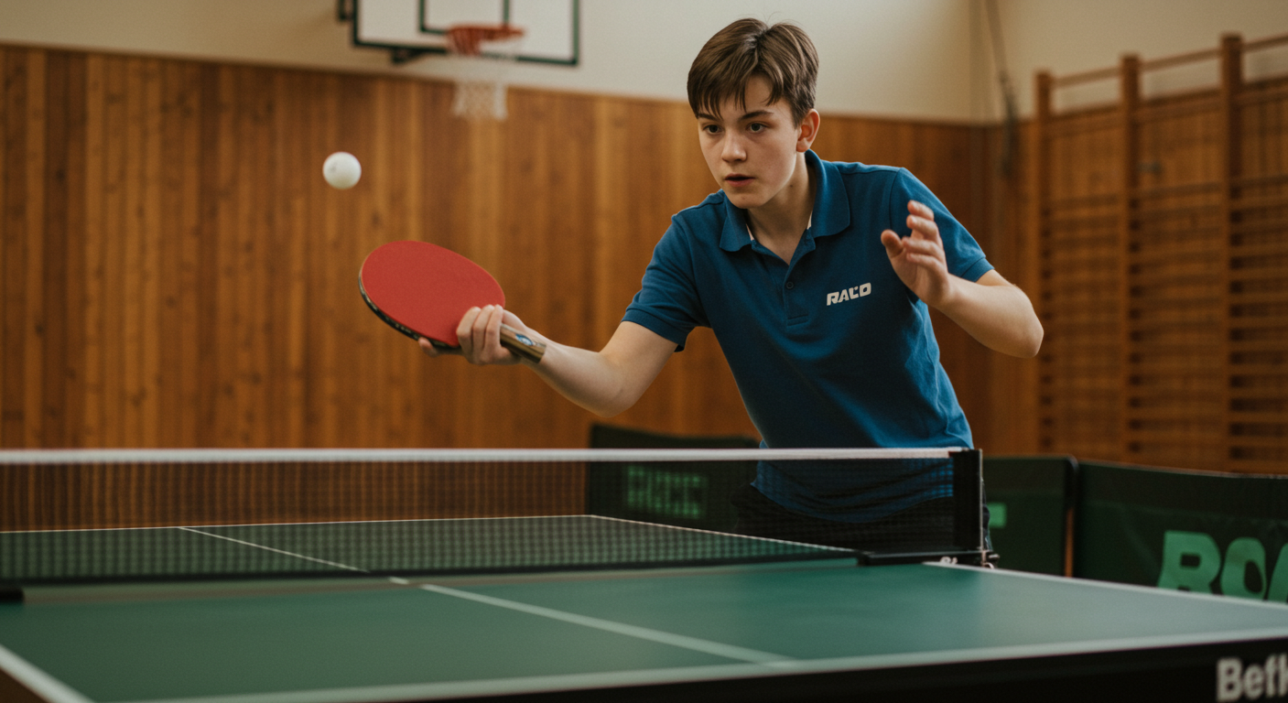
A match in table tennis is made up of multiple games. The most common formats are:
| Match Format | Number of Games to Win |
|---|---|
| Best of 3 games | First to 2 |
| Best of 5 games | First to 3 |
| Best of 7 games | First to 4 |
Professional and international competitions often use best of 7, while club and casual matches may use best of 5.
Each game begins at 0–0 (called “love–all”) and continues until one player reaches 11 points with a 2-point lead.
When Do Players Switch Serve?
Serving in table tennis alternates after every 2 points. For example:
-
Player A serves the first 2 points
-
Player B serves the next 2
-
This continues throughout the game
At deuce (10–10), the serve alternates every point until the game ends. This rule adds fairness and balance during the most critical part of the game.
In doubles matches, the serving rotation also involves player order and table sides, which we will explain later.
Switching Ends and Sides
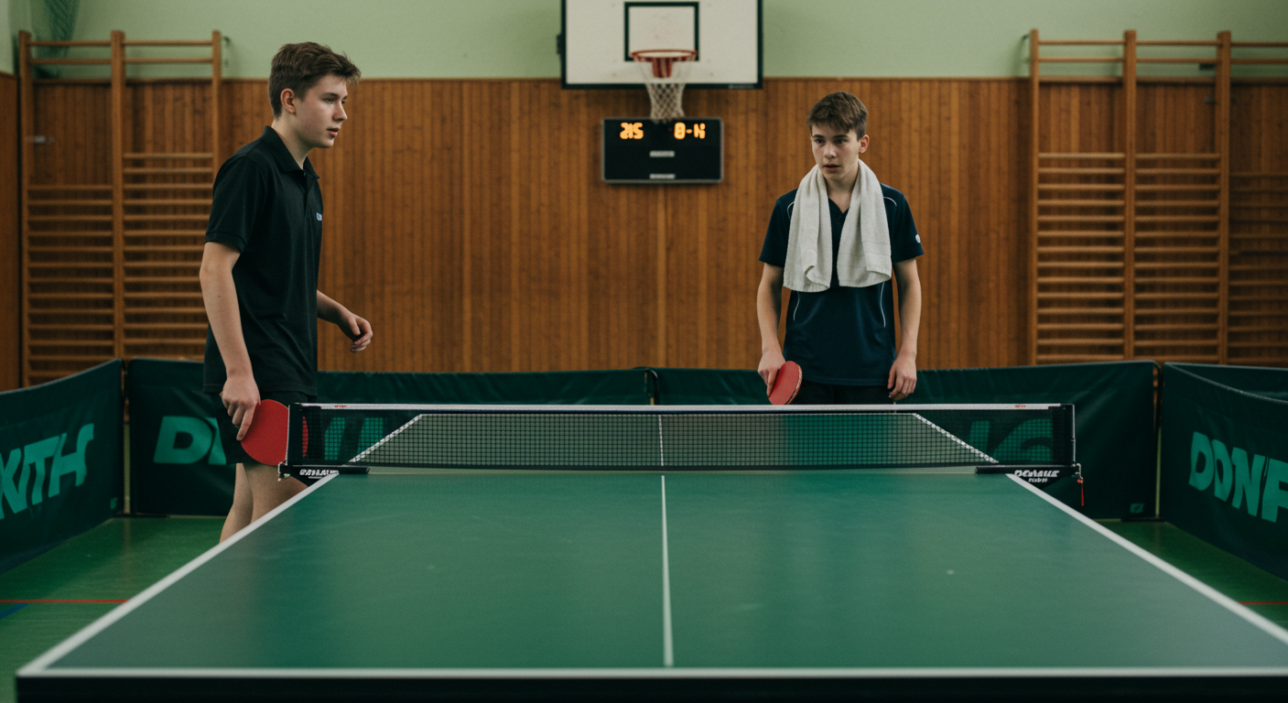
Players switch sides of the table after each game to ensure equal playing conditions. If a match reaches a deciding game (e.g. the 5th in a best-of-5 match), players also switch ends when one player reaches 5 points in that game.
This prevents any environmental advantages, such as lighting or airflow, from impacting only one player throughout the match.
Scoring in Singles vs Doubles
In both singles and doubles, points are scored the same way: one point per rally. However, there are a few important differences in how the game is played and how service is rotated.
In Singles
-
The server can serve to any part of the opponent’s side
-
No restrictions on direction
-
Players alternate serves every 2 points
In Doubles
-
The serve must be played diagonally
-
The ball must bounce in the server’s right half and the opponent’s right half
-
Teammates must alternate hits during the rally
In doubles, the order of serving and receiving is fixed and rotates between all four players.
An Example of a Doubles Rotation

Let’s say we have two teams:
-
Team 1: Alice and Ben
-
Team 2: Charlie and Dana
Rotation might look like this:
-
Alice serves to Dana (2 points)
-
Charlie serves to Ben (2 points)
-
Ben serves to Charlie (2 points)
-
Dana serves to Alice (2 points)
This 4-person cycle continues throughout the game, with players rotating serve and return roles. After each game, teams switch sides and receiving order to keep things fair.
How Are Scores Called?
In official matches, the server’s score is called first. So if the server has 7 points and the receiver has 5, the score is called as:
“Seven–Five”
At the start of the match, an umpire or player may announce “Love–All” to begin. In deuce situations, you may hear “Ten–All.”
In professional matches, umpires announce each point verbally to the audience.
Handling Deuce and Advantage

As mentioned earlier, when both players reach 10–10, the game enters deuce.
From this point:
-
Players alternate serve every point
-
The first to gain a 2-point lead wins the game
For example:
-
11–10: “Advantage server”
-
11–11: “Deuce”
-
12–11: “Advantage receiver”
-
13–11: Game over
There is no limit to how long this can continue. Some famous matches have had deuce scores that extended well beyond 20 points each.
Let and Replay Situations
A let is when a point is interrupted or must be replayed. This happens in specific cases:
-
The serve touches the net but still lands legally
-
A player is distracted by an external disturbance
-
The ball breaks during a rally
-
An incorrect serve order is identified during the point
Let serves are not counted in the score and are replayed. There is no limit to the number of let serves allowed in a game.
Who Keeps Score in Matches?
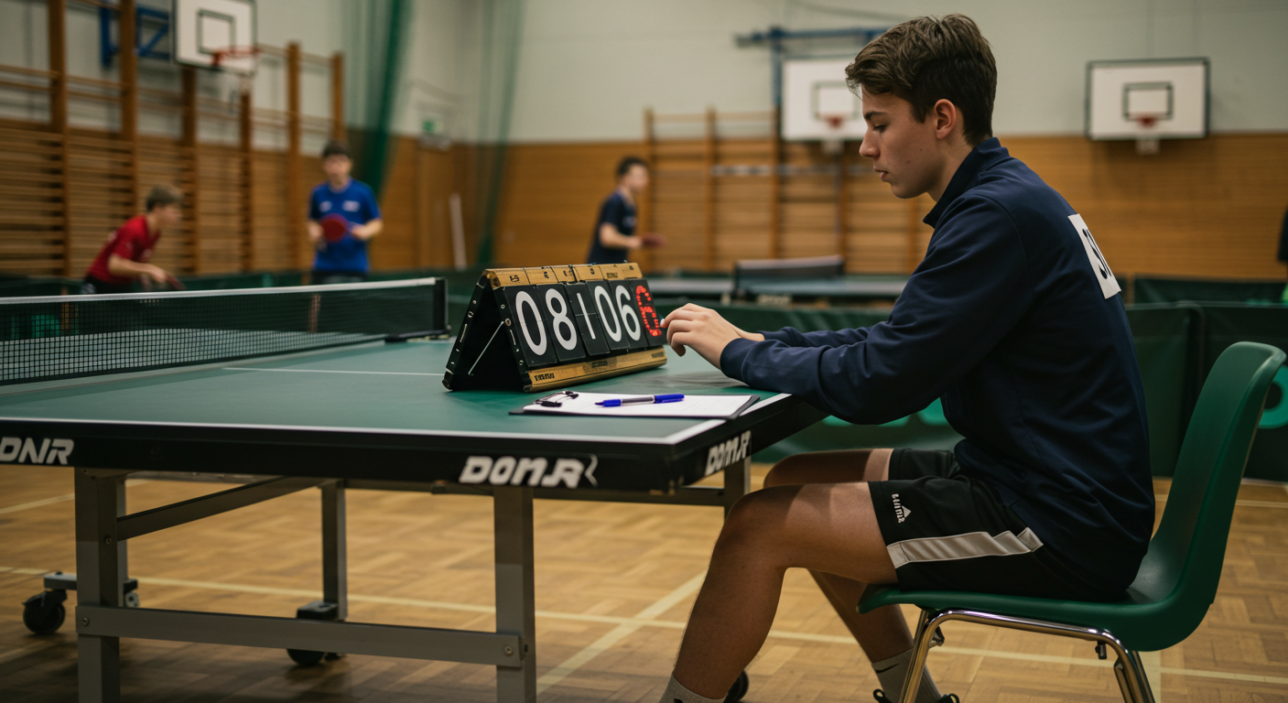
In casual games, players often keep score themselves. In official matches, a scorer or umpire keeps track.
-
Umpires use a score sheet or digital scoreboard
-
They also track serve rotation, let serves, and timeouts
-
Umpires are trained to identify legal and illegal points
In some tournaments, assistant umpires or referees may assist in close decisions.
What Happens in Case of a Dispute?
Disputes in casual games are usually resolved by mutual agreement or a replay. In tournaments:
-
The umpire’s decision is final
-
Players may request clarification but cannot argue endlessly
-
In elite events, instant replay technology is sometimes used
Good sportsmanship means accepting a fair ruling and continuing the match without disruption.
Time Limits and Game Pace
To keep the pace of play steady, ITTF rules enforce the Expedite System in rare cases.
This applies when:
-
A game lasts more than 10 minutes without either player reaching 9 points
Once this rule is applied:
-
Each player must return the ball within 13 seconds
-
If the receiver makes 13 successful returns, they win the point
The expedite rule is rarely used in modern play due to faster gameplay and improved pacing.
Scoring in Tournaments and Leagues
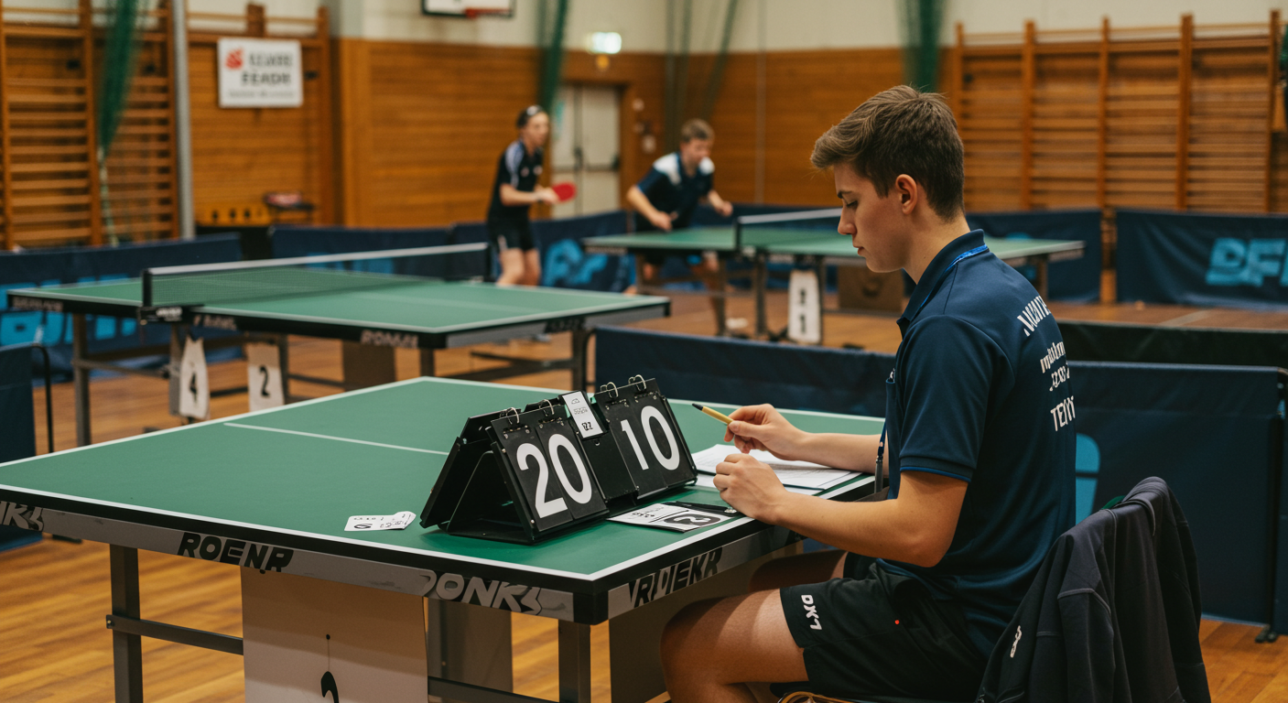
In league and tournament play:
-
Each match usually contributes to a team result
-
Scoring may involve match wins, game differences, and even point differences
-
Consistency across games is crucial, not just individual wins
Players must keep accurate records of results and follow tournament formats carefully. These often include round-robin, knockout, or Swiss systems.
Tips for Tracking Score in Real-Time
If you’re playing without a scorer or umpire, here’s how to keep things smooth:
-
Always say the score aloud before each serve
-
Use fingers on the paddle or non-dominant hand to track score
-
Switch serves strictly every 2 points (or every 1 at deuce)
-
Record game scores immediately after each game
-
In doubles, clarify rotation and service order with teammates before starting
Final Thoughts: How Does Table Tennis Scoring Work?
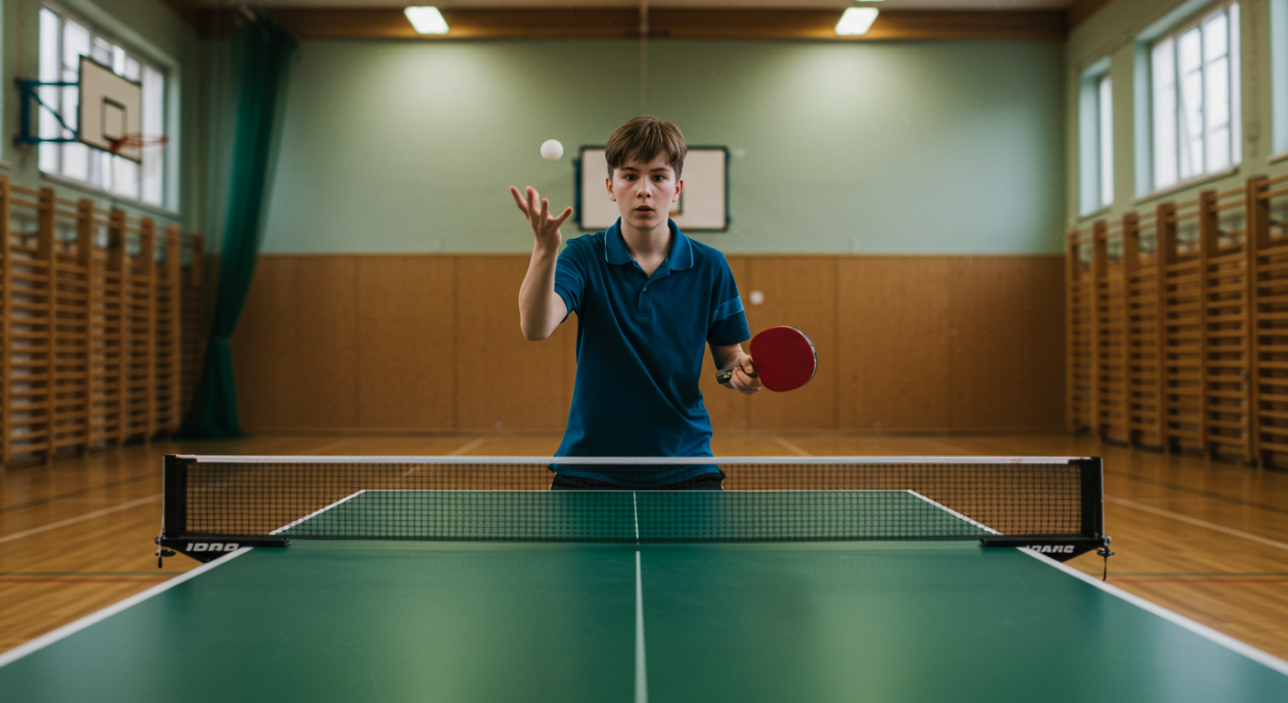
Understanding how table tennis scoring works is key to playing competitively and confidently. It is not just about counting points. It is about knowing when to switch serve, how to handle deuce, what counts as a let, and how matches progress from start to finish.
With the shift to 11-point games, rally scoring, and dynamic rotations in doubles, the modern scoring system is designed to keep table tennis fast, fair, and fun. Master it, and you’ll not only avoid confusion — you’ll start to play with more rhythm, focus, and strategy.
FAQs About Table Tennis Scoring
What happens if both players forget the score?
In casual games, agree to replay the last point or return to the last known score. In official play, the umpire decides based on available records.
Is it legal to win a point on your opponent’s serve?
Yes. Rally scoring means either player can win the point, regardless of who served.
Can a player win 11–10?
No. A player must lead by at least 2 points to win. The game would continue until someone leads by two.
What if a ball hits the edge of the table?
Edge balls are legal and count as in. The point continues unless the ball goes off without bouncing.
